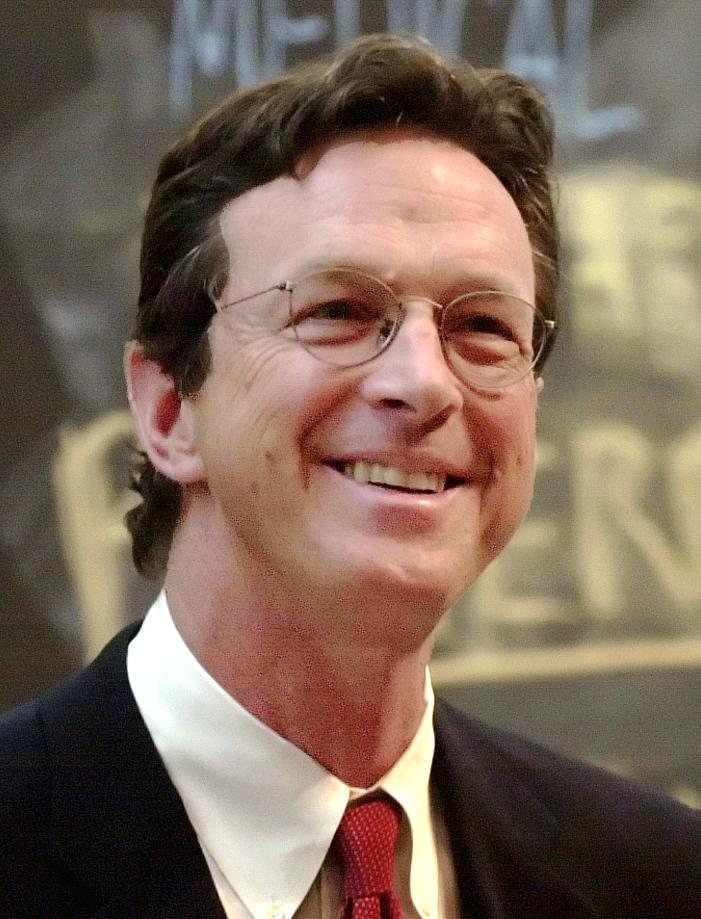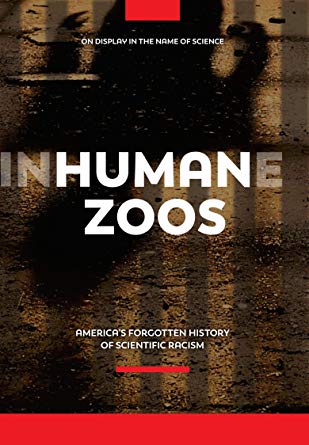Should We Really “Listen to Science”? What Should We Listen For?
Politicians who insist that their beliefs represent science might be surprised by the checkered history of that viewThis political season, politicians are telling us to “listen to science.” But buyer beware. The politicization of science is a long and sad history of so-called “scientific truths” that were not only mistaken but resulted in tragedy. Those who know a bit of this history should be wary of politicians’ table-pounding claims on topics ranging from climate change to COVID.

In a 2003 lecture at Caltech, Michael Crichton, MD (pictured in 2002, courtesy Jon Chase CC BY-SA 3.0), author of great science fiction including Jurassic Park, noted, “science has in some instances been seduced by the more ancient lures of politics and publicity.”
For example, racism was “settled science” in the early 20th century. So was eugenics, the so-called science targeting minorities and the mentally ill as inferior. Eugenics was supported by figures like Teddy Roosevelt, Alexander Graham Bell, Clarence Darrow, George Bernard Shaw, Oliver Wendell Holmes, John Harvey Kellogg (of cornflakes fame), Francis Crick, Herbert Hoover, Linus Pauling, and John Maynard Keynes. Major universities, including Harvard, embraced its “settled science.”
Eugenics was declared science by consensus. Almost everyone subscribed. But Crichton (1942–2008) rightly observed, “the work of science has nothing whatever to do with consensus. Consensus is the business of politics.”
Another example of “settled science,” in this case enforced by fiat rather than consensus, comes from Josef Stalin (1878–1953), dictator of the Soviet Union. Stalin declared the failed agricultural “science” of Trofim Lysenko (1898–1976, pictured), Lysenkoism, to be the official policy of the Soviet Union:
Lysenkoism was “politically correct” (a term invented by Lenin) because it was consistent with certain broader Marxist doctrines. Marxists wanted to believe that heredity had a limited role even among humans, and that human characteristics changed by living under socialism would be inherited by subsequent generations of humans. Thus would be created the selfless new Soviet man.
Also Lysenko himself arose from a peasant background and developed his theories from practical applications rather than controlled scientific experiments. This fit the Marxist propaganda of the time holding that brilliant industrial innovations would arise from the working classes through practical applications. Lysenko’s theories also seemed to address in a quick and timely manner the widespread Soviet famines of the time arising from the forced collectivization of agriculture, rather than the much slower changes from scientific experimentation and genetic heredity.
Peter Ferrara, “The Disgraceful Episode Of Lysenkoism Brings Us Global Warming Theory” at Forbes (April 28, 2013)

Application of the flawed theory caused massive crop failures and at least 30 million Soviet citizens died of starvation. During this period in Soviet history, no one was allowed by law to dissent from Lysenkoism:
Scientists who refused to renounce genetics found themselves at the mercy of the [Soviet] secret police. The lucky ones simply got dismissed from their posts and were left destitute. Hundreds if not thousands of others were rounded up and dumped into prisons or psychiatric hospitals. Several got sentenced to death as enemies of the state or, fittingly, starved in their jail cells.
Sam Kean, “The Soviet Era’s Deadliest Scientist Is Regaining Popularity in Russia” at The Atlantic (December 19, 2017)
Some today want to silence any opposition to their “settled
science” by legislation. Laws prohibiting debate on the degree to which
humans participate in global warming have been proposed. Extreme political actions by the Green movement are defended by the claim that the topic is settled science.
There is, indeed, science that is settled. Smoking causes cancer. Engineers rely on Newtonian mechanics to build bridges and trucks. Regular tooth brushing helps avoid tooth decay. What makes science truly settled?
Michael Crichton says: “What is relevant is reproducible results.” Science is settled only by repeated corroboration with additional evidence.
Unfortunately,
many papers in the literature today are based on a single study without
corroboration. The analysis of limited data can result in unfounded
conclusions. As reported by TIME, some researchers estimate that 90% of studies published in medical journals are false.
The reason so many are false is wonderfully illustrated by extreme examples of correlation without causation at Spurious Correlations. There, we are informed, “per capita consumption of mozzarella cheese” is shown to nicely correlate with “civil engineering doctorates awarded.” The data curve plot for “number of people who drowned by falling into a pool” follows the curve of “films Nicolas Cage appeared in.”
What a hoot!
Correlation in these extreme examples may be strong but any causal relationship is lacking. The phoniness of other unrelated but highly correlated data may not be as obvious. More subtle correlations, without causal relationships, make it into the literature more often. The soft sciences, like social science, finance, and psychology, don’t have the luxury of beautiful equations like physics. They must rely heavily on data.

The time frame varies for science to be considered truly settled. In in 1906, in support of eugenics, the Bronx Zoo displayed a black African man in a cage with monkeys. Eugenicists claimed that Africans were inferior to the more evolutionarily developed whites. At the time, the New York Times heralded the exhibit with the headline: “Bushman Shares a Cage with Bronx Park Apes.” In the body of the article, the African man was identified as “a Bushman, one of a race that scientists do not rate high in the human scale.” (Note the appeal to consensus.) Only in July this year did the Bronx zoo apologize for its display of over a century ago.
Similarly, birth control advocate Margaret Sanger’s eugenics policies have only recently been denounced by Planned Parenthood, the organization she co-founded in 1916. Sanger (1879–1966) has been called “a monster, a vile racist and eugenicist who praised the Nazi’s sterilization tactics,” based on her writings and the award given in her name is to be renamed.
Even without politics, science has been repeatedly exposed as wrong. Here are a few examples that come to mind:
· George Washington died because too much “bad blood” was drained from his body by attending physicians.
· I was one of the victims of the “dangerous fad”
of removing kid’s tonsils. (I couldn’t swallow for days.) The “settled
science” said tonsillectomies were a panacea for preventing throat
infections. The widespread practice of surgeons collecting tonsils ended
in the 1970’s.
· The human appendix used to be thought of as vestigial but is now known to be involved in immune and other functions.
· Junk DNA , once thought to be useless remnants of an evolutionary past, has proved to be vital in the reproduction process.
If many theories that were “settled science” of the past have been debunked, why should we believe science has everything right today?
Sound science has a hard enough time with the need to form hypotheses
and subsequent experimental verification. Politics can impede this
progress and muddy things to the point where truth can no longer be
clearly seen.
So the next time politicians order you to “listen to
science,” consider the source and look for hidden agendas. If legitimate
opposition to a viewpoint is still being voiced, a science is not yet
settled.
Notes:
- For the history of some of the shameful past of the “settled science” of eugenics, watch Discovery’s engaging video Human Zoos: America’s Forgotten History of Scientific Racism which has about three million YouTube hits. As evidenced by the outrage expressed in the 5000- plus comments, some attribute the recent apology of the Bronx Zoo to this documentary.
- For a deeper understanding how false conclusions can spring from data analysis, look at the highly readable books by Pomona Economics Professor and Bradley Center Fellow Gary Smith. His latest, written with statistician Jay Cordes, is The Phantom Pattern Problem: The mirage of big data (Oxford, October 1, 2020).
You may also want to look at:
Study shows eating raisins causes plantar warts. Sure. Because, if you torture a Big Data enough, it will confess to anything. (Robert J. Marks)
and
New book outlines the perils of big, meaningless data. Gary Smith, co-author with Jay Cordes of Phantom Patterns, shows why human wisdom and common sense are more important than ever now.
